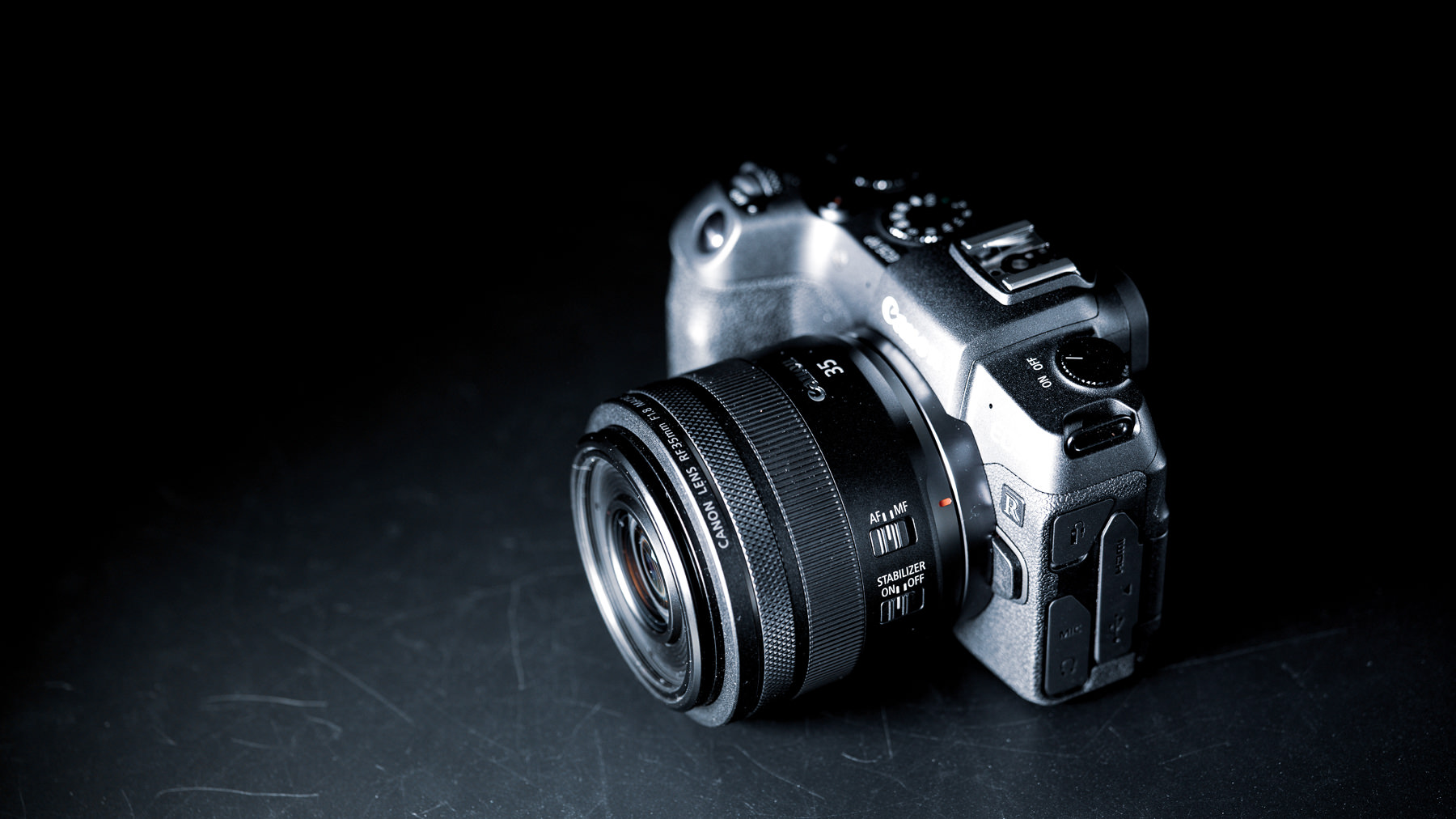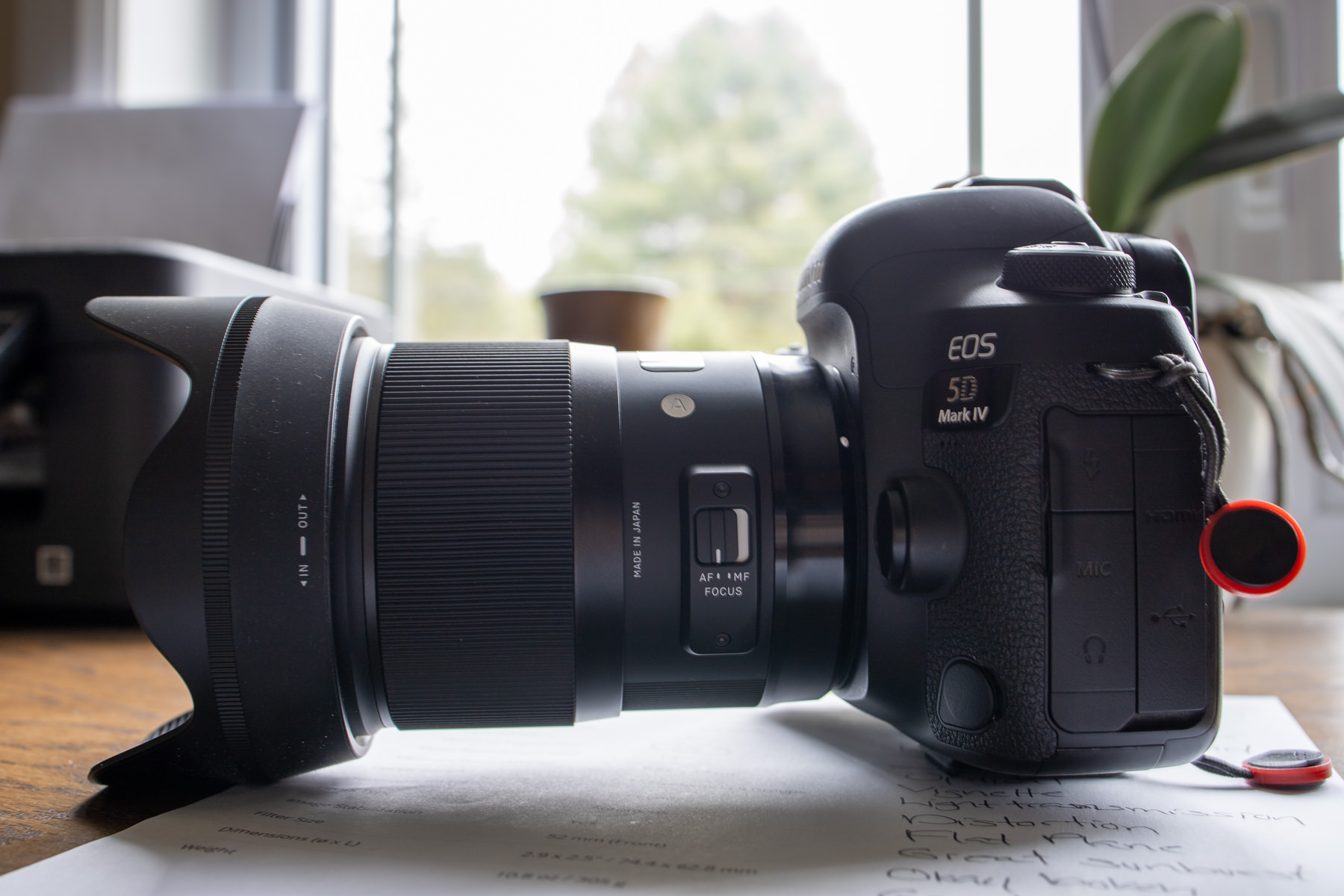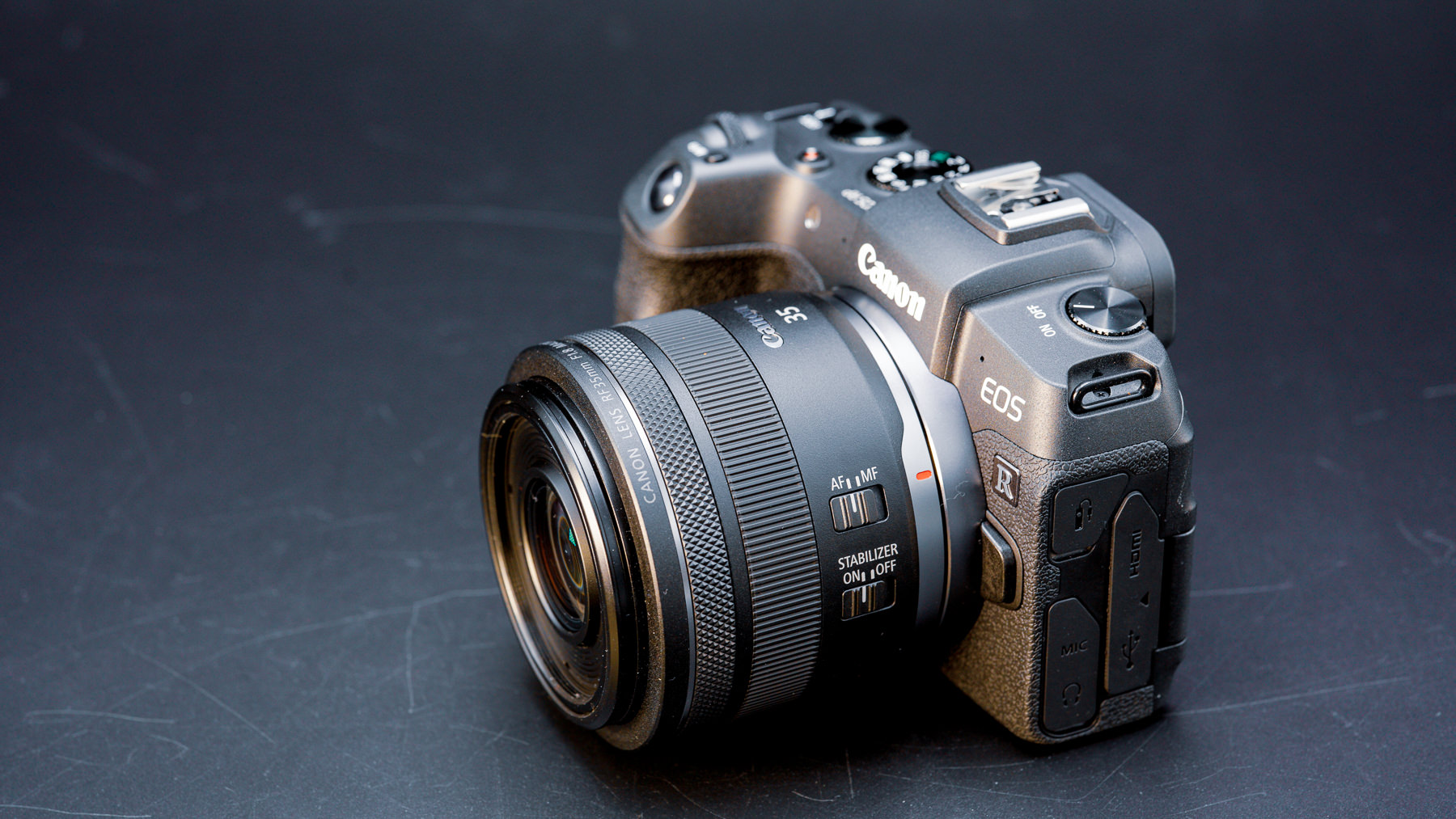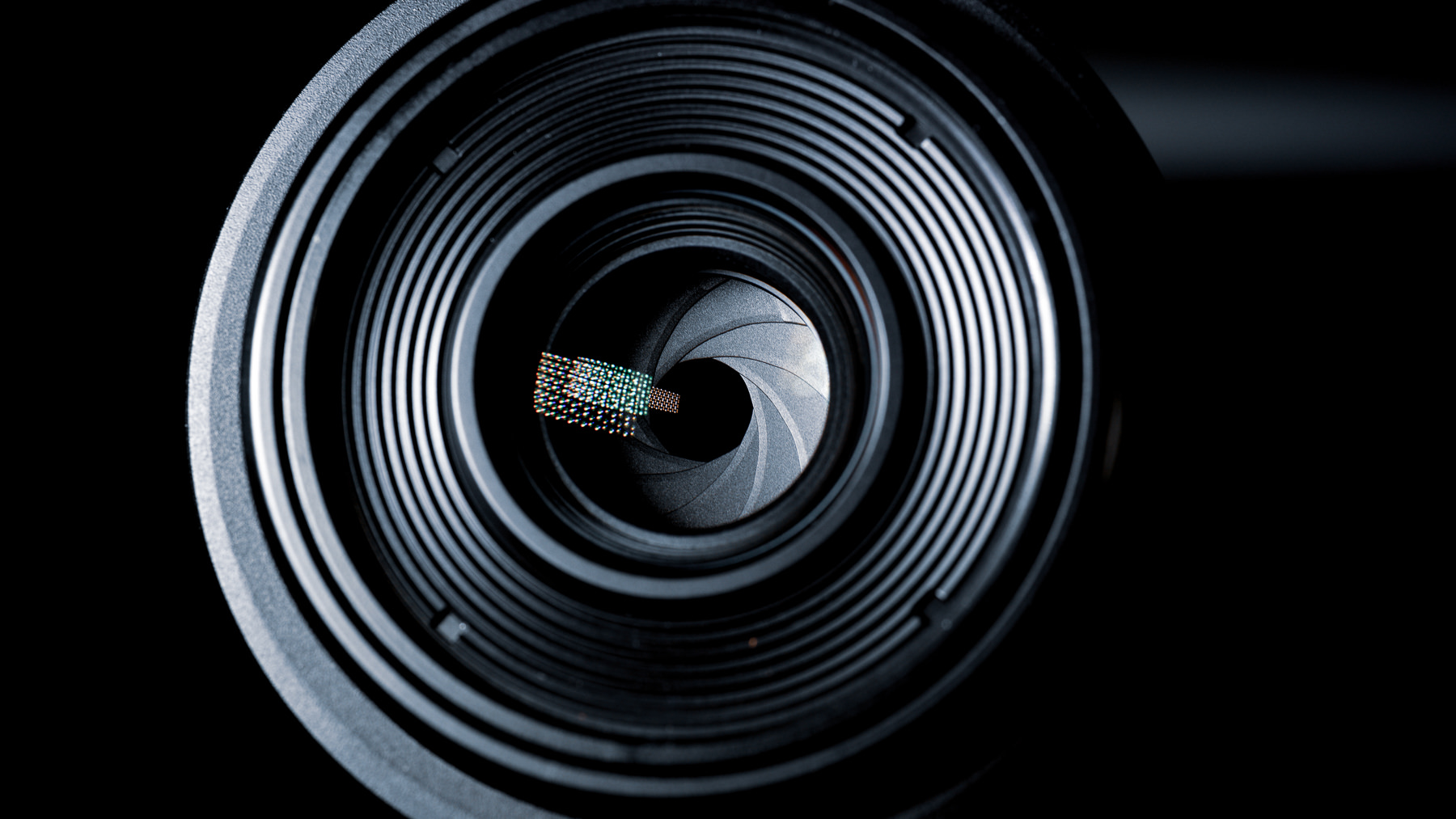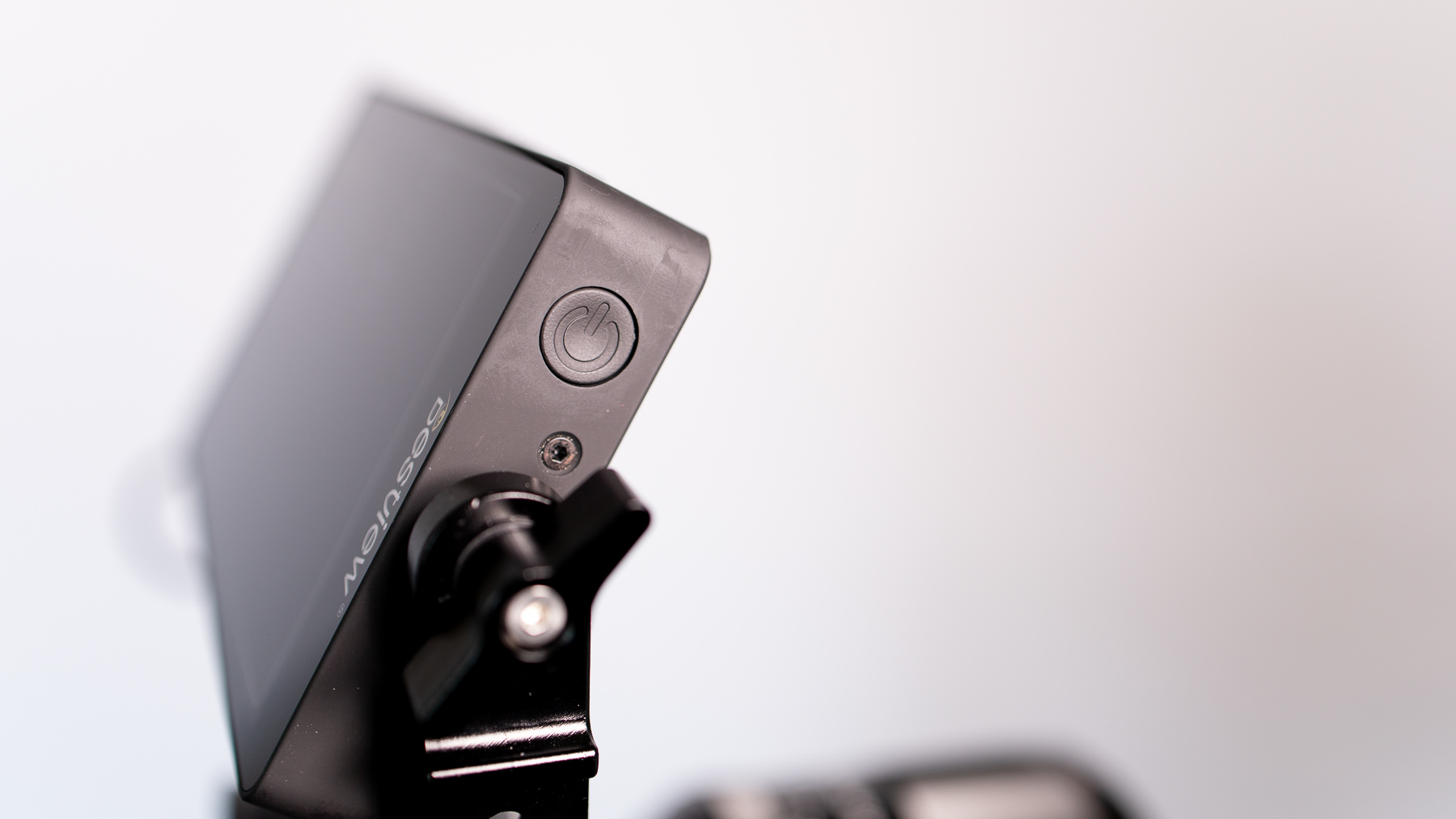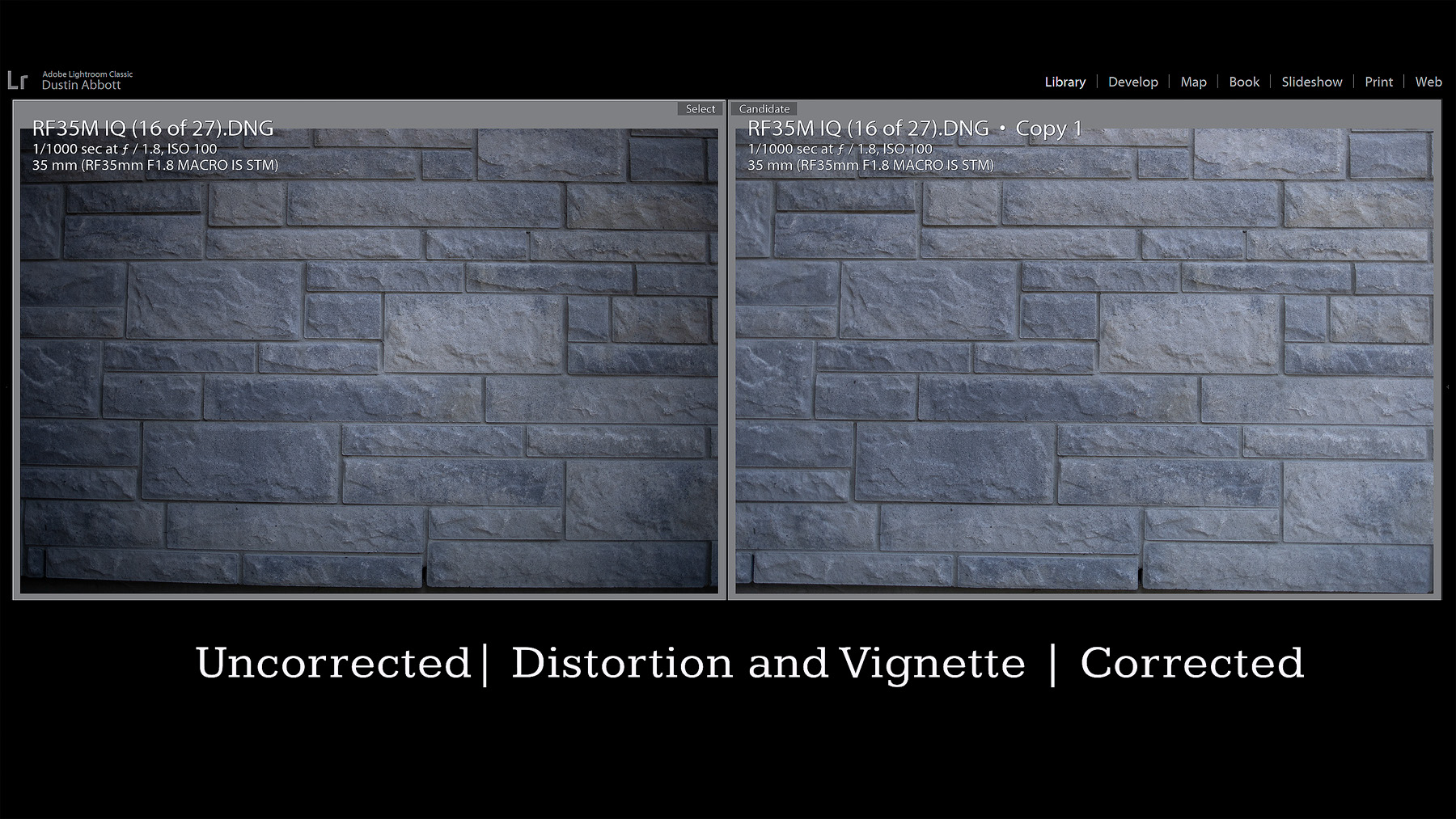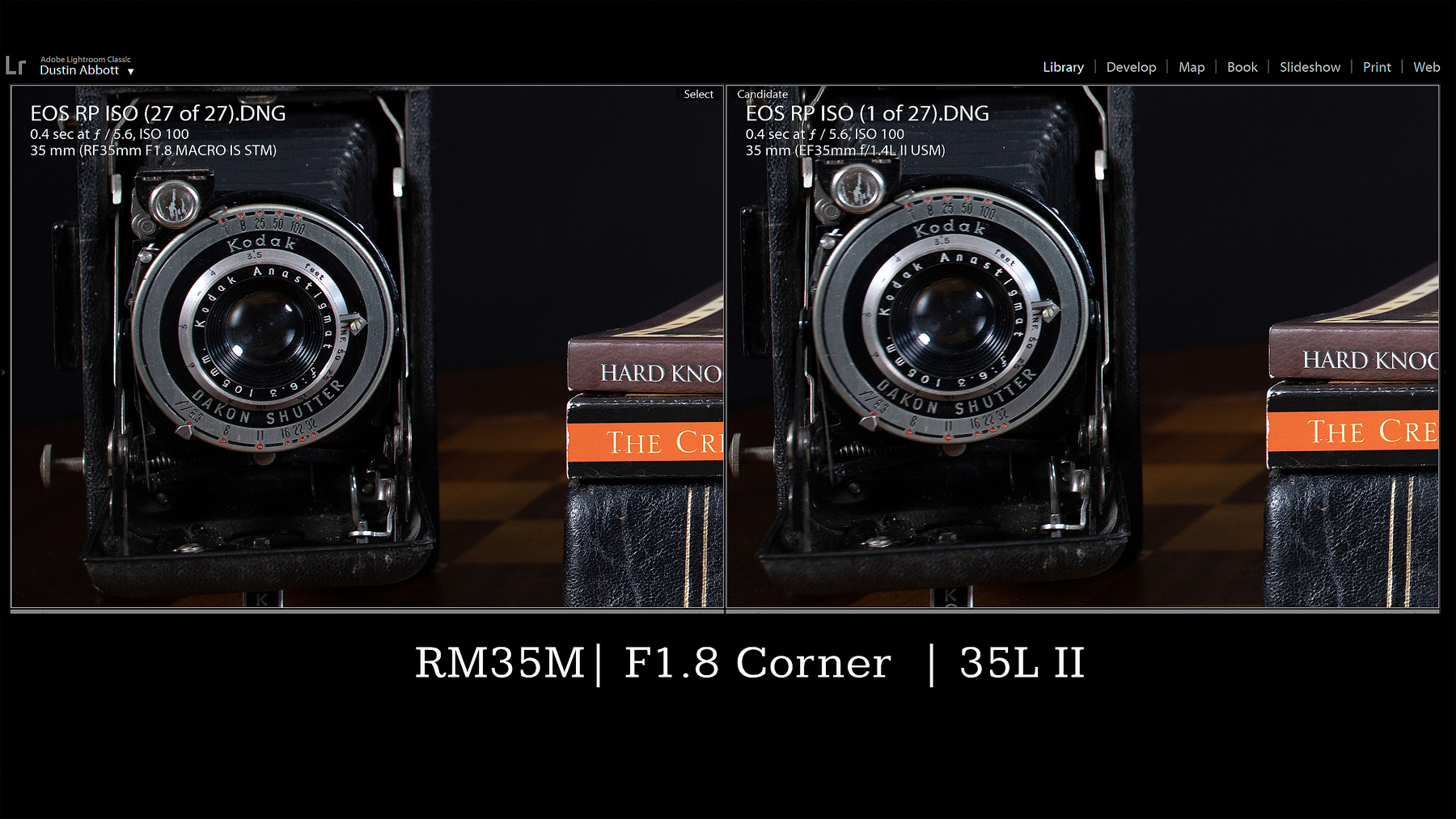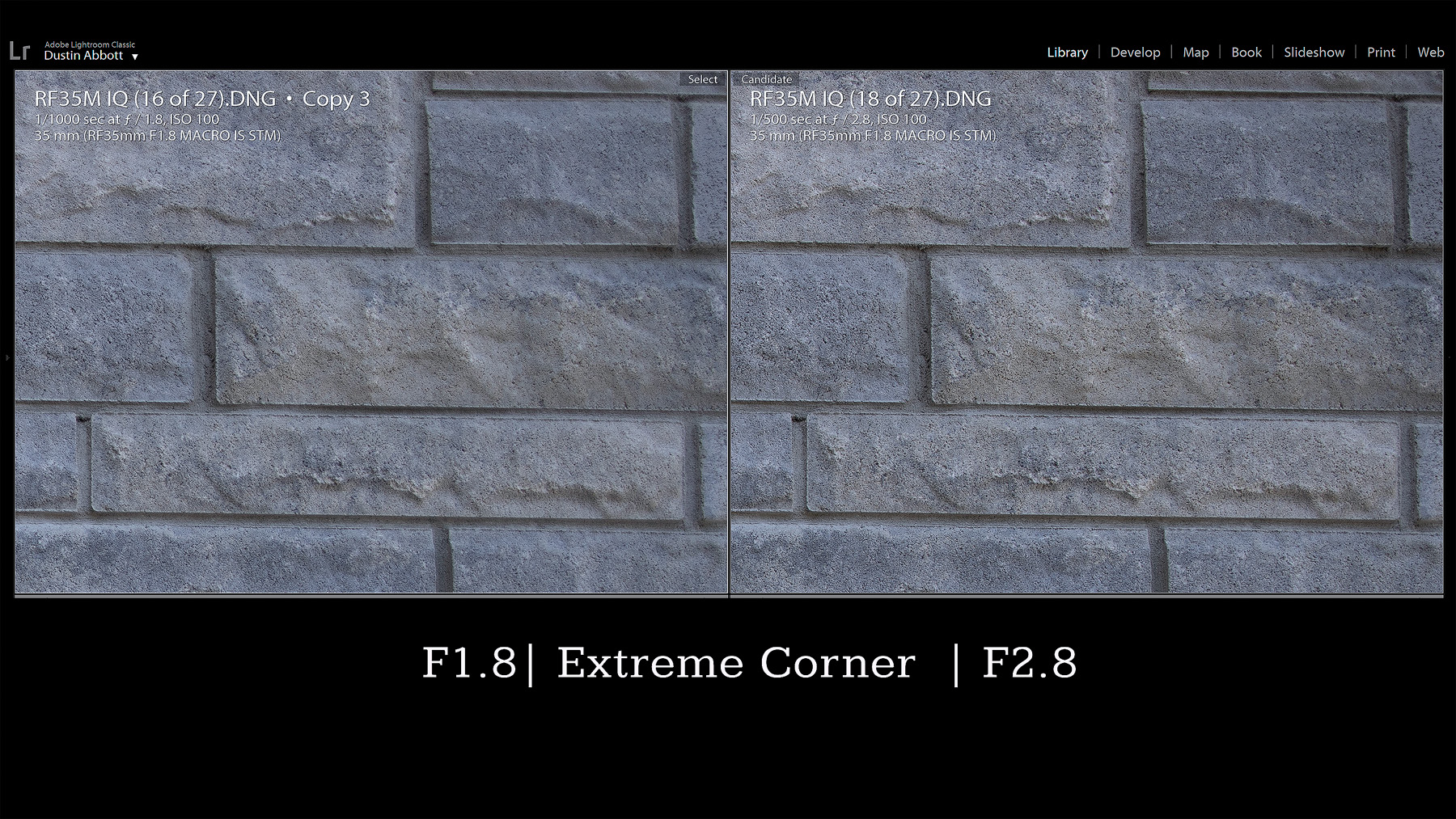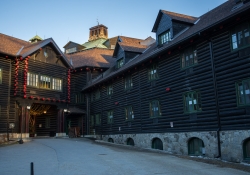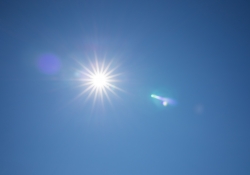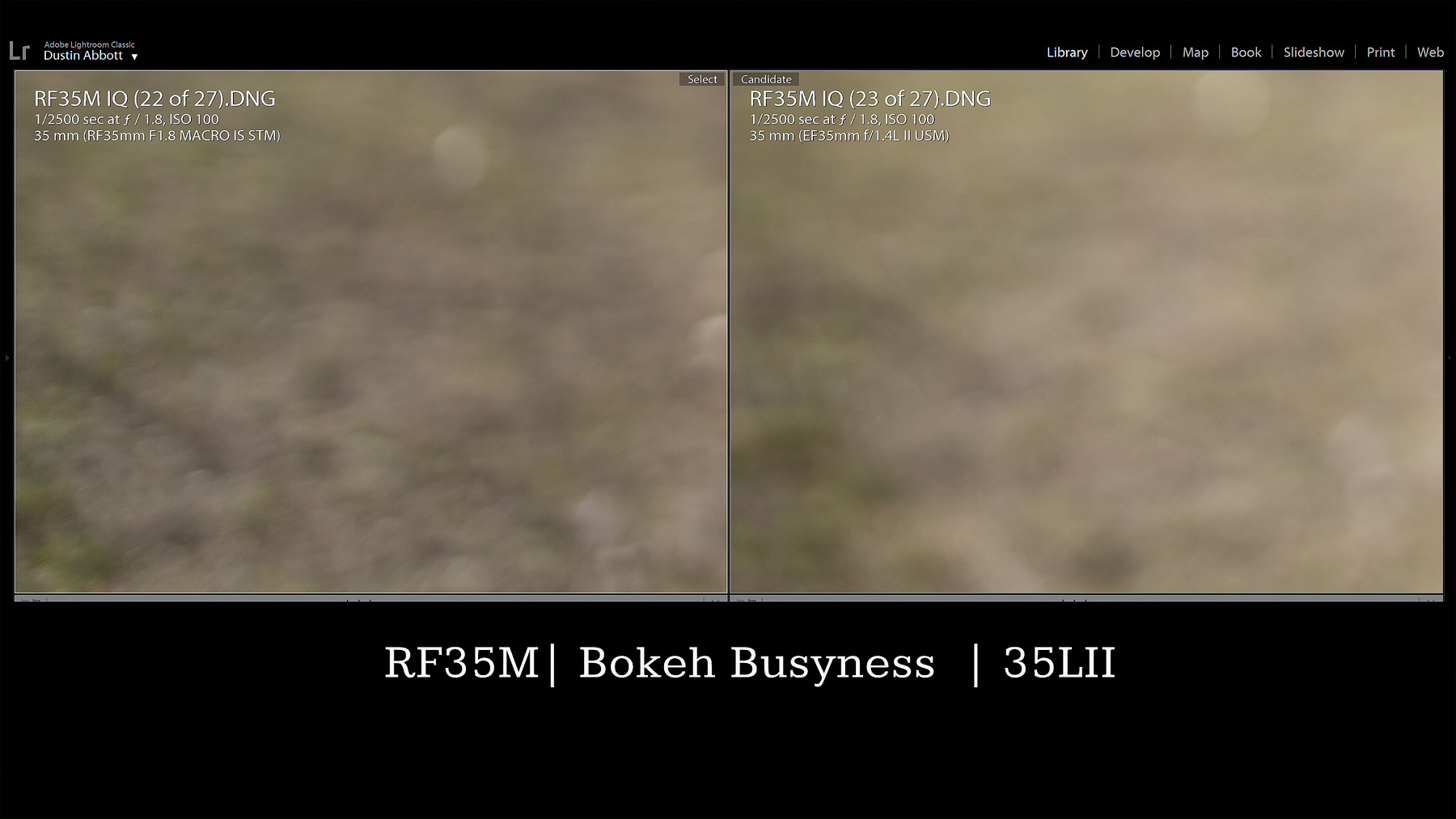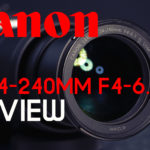The Canon R system (full frame mirrorless) launched with four lenses in the new RF mount and has subsequently had a fifth announced. Those lenses have an average MSRP in the USA of $1919, so this is most definitely NOT a budget lineup. If you remove the less expensive RF 35mm F1.8 Macro IS STM from the lineup (the lens we will address here), that average price jumps to $2274. The Canon RF 35mm F1.8 Macro IS STM is the the least expensive Canon RF-mount lens at the moment, so it makes a logical pairing with the Canon EOS RP – lowest point of entry into a mirrorless full frame camera. Lenses like the RF35M are definitely needed, as in both cases the average price of these lenses far exceeds the $1299 price of the EOS RP (and even the roughly $2000 the Canon EOS R is currently going for). The Canon RF 35mm F1.8 Macro combines a very useful focal length with a fairly large aperture (F1.8), Image Stabilization (IS), and a 1:2 reproduction ratio (0.50x magnification). This isn’t a full 1:1 Macro lens, but has enough macro ability for most people in most situations. It is reasonably compact and light, very sharp, and generally a very flexible lens. But is it the RF35M the lens for you? Find out by reading on.
Follow Me @ Patreon | My Newsletter | Instagram | Facebook | Twitter | Flickr | 500px
There are few native RF mount lenses for the new Canon mirrorless bodies, but this is helped by how well EF mount lenses adapt to the system, which vastly extends the number of options with relatively little penalty. Still, the reality remains that native mount options are pretty slim near the launch of any new camera system, so that makes the RF35M particularly important for the simple reason that at $499 USD MSRP, it represents the sole lens that many new purchasers of the EOS R or EOS RP can afford. I reviewed the RF35M concurrent with my review of the Canon EOS RP, as I felt that the the “bargain” lens for the R system made for a logical pairing with the “bargain” camera.
Prefer to watch your reviews? You can get the details in my final video review, which also gives you a look at the video performance in a way that a text review cannot.
Canon RF35M Build and Design
The RF 35mm F1.8 is, in concept, just the kind of lens I would personally want in a new system. It is reasonably compact at only 2.9″ (74.4mm) in diameter and 2.5″ (62.8mm) in length and weighs in at a diminutive 10.8oz (305g). This makes it very comparable in size and weight to the Canon EF 35mm F2 IS, a lens that I’m actually a big fan of and have called “Canon’s underrated gem”. The RF35M is a great pairing on the EOS RP body, and both the camera and lens combined weigh less than, say, the Sigma 28mm F1.4 ART lens that I’m currently reviewing.
Beyond that, however, the combination of a 35mm focal length (one of the best walk-around focal lengths out there) along with the extremely close focus abilities of the RF35M make it an extremely versatile option. I view this lens in the same light as I do lenses like the Zeiss 50mm F2 Makro-Planar that are just useful on so many levels. The 35mm focal length in a macro lens, however, is both a blessing and a curse. As we will see in our image quality section, a wider focal length does lend itself both to more native distortion and perspective distortion when compared to the longer focal lengths more typical to macro lenses (often in the 90-180mm range). You can see in the photo below that at close focus distances of products you can see some of that distortion at play.
What you can also see is the importance of the IS (Image Stabilizer) in the lens. Canon has elected thus far to forego IBIS (In Body Image Stabilization) and continues to state that lens-specific IS provides the best results. That may in fact be true, but I would also point out that only 2 of the 5 lenses Canon has released (or is about to release) for the R system actually have IS. I shot the shot above at a miserly .6 second shutter speed – well outside the zone that one can successfully handhold a lens like this without IS (particularly at close focus distances). The shot isn’t perfectly stable, but usable. Results at further distances would be better still. The IS in the RF35M is rated at up to 5 stops of handholding.
Image Stabilization is obviously also very important for video work, as the Digital IS that Canon includes in more recent camera bodies is a poor substitute for true optical stabilization.
The RF35M has Canon’s typical consumer-grade build quality. It feels better than the budget EF 50mm F1.8 STM but way behind a lens like the Tamron 35mm F1.8 VC lens (which costs about $100 more). The RF35M unfortunately highlights the fact that Canon seems intent on persisting in one of their more foolish trends – not including weather sealing or a lens hood on non-L series lenses. This policy seems even more archaic when one considers that essentially all the competition at any price includes a lens hood, and I’ve also noted that weather sealing of some kind is now included on more lenses than not. Canon’s policy was fine back in the day when third party alternatives were budget options that were typically rough around the edges, but in the modern market, many third-party lenses are extremely competent and are often more polished than first party alternatives. I think Canon is doing itself a disservice here, as in many cases people will not purchase a separate lens hood (the EW-52 costs an additional $42) and thus never get the basic benefit of a lens hood (added flare resistance and protection of the lens).
I’ll also have to pass judgment on the presentation of the lens. The lens arrives in a nice enough cardboard box, but inside the lens is literally just wrapped in multiple layers of bubble wrap. No custom-molded foam or even plastic. It’s really “low-rent”, and I would knock this presentation even from a budget lensmaker releasing $100 lenses. Canon really needs to step up its game in this area; someone needs to send them the memo that the competition has gotten much, much better!
The body design of the RF35M is engineered plastics around a metal lens mount. It has a matte finish that is similar to other recent lenses (including the EF 50mm F1.8 STM), though the RF mount lenses have an additional stylish platinum accent area that matches where the lens mounts to the camera body.
There are two switches (On/Off for the IS and AF/MF) on the side of the barrel. There is also a manual focus ring located in the center of the lens. This being a mirrorless lens with an STM focus motor, there is not direct mechanical coupling to the lens elements, so manual input on the focus ring is routed through the focus motor (focus-by-wire). As per usual, there are limitations to this approach, including less tactile response and no hard stops in either direction. On a positive note, the camera body will show an electronic distance scale on either the viewfinder or the LCD when input is detected, so this helps. I’m not a huge fan of focus-by-wire, though in this age of mirrorless cameras, it seems to be the new reality.
There is a useful new physical control in the addition of a “control ring” to RF mount lenses. This is located near the front of the lens on all current RF lenses and it can be assigned a variety of different values. A couple practical ones to me include Aperture (you can use it essentially like an aperture ring) and (my current choice) Exposure Compensation. This adds another layer of physical control over the lens or camera, so I think you’ll find that you will want that Control Ring adapter for your EF lenses! I felt limited when I used the adapter without it, and loved the additional functionality when I used the control ring adapter with my EF glass. The control ring works well on the RF35M, providing a convenient way to control either lens or camera functionality. It has a different texture to the ring along with a slightly different visual look.
The RF35M has a rather small 52mm front filter thread which is fortunately fairly common. The lens barrel is quite a bit wider than this (over 20mm), which gives the lens a slightly different look from the front. The nine rounded aperture blades make for a stylish look with the aperture closed down a bit.
The RF35M achieves its 0.50x times magnification (1:2 reproduction ratio) at a minimum focus distances of 6.69″ (17cm), so the working distance is pretty close considering that over half of that is taken up by the length of the lens from the sensor. Your actual working distance will be about 3 inches from the front of the lens. A 1:2 reproduction ratio is called “half life size”, and some debate whether or not this constitutes a true macro lens (which is typically 1:1). The inner barrel extends about an inch at macro distances, and the amount of magnification you can achieve looks like this:
The build quality of the RF35M is probably best described as adequate. It gets the job done, and there is nothing fundamentally wrong with it, but there is also nothing particularly special about it. It is consumer grade, pure and simple, and, other than the control ring that will be standard on Canon’s RF lenses, Canon has done nothing to set the lens apart.
Canon EF35M Autofocus Performance
The RF35M employs Canon’s STM or Stepping Motor focus system. STM has become Canon’s de facto budget focus system, with higher grade RF lenses receiving Canon’s Nano-USM technology that is faster and quieter. STM’s strength is in the smooth way it achieves focus (particularly in video) where transitions are not abrupt. STM lenses rarely do the little micropulses that sometimes characterize faster focus systems.
In real-world use the STM focus motor used in the 35mm Macro is fairly quiet but not silent by any stretch. You can hear minor shuffling sounds during focus, and when doing focus pulls in video settings you can hear a light clicking or whirring. Focus speed is fast but not instantaneous like that of of the RF 24-105L (which I reviewed here). Accuracy was generally very good for stills photography.
One positive was how good autofocus was in extremely dark conditions (provided that you focus on an area of contrast). I shot this in an essentially a dark room, handheld, with values of 1/20th second at ISO 40,000 on the EOS RP (ISO 100 would have required a 40 second shutter speed). In other words, very, very dark. Despite that, the RF35M was able to successfully focus with fairly good speed.
This dramatically drops off if you don’t have an area of contrast, however, and I found when doing macro work that if I didn’t focus on an edge I got a surprising amount of hunting at macro distances. I shoot a LOT of product photography for my many reviews (and often in commercial work for companies), and this stood out to me as I was surprised by how much hunting I saw in that scenario even though I was using high end lighting.
In video work focus pulls are fairly smooth but also slower than usual. This is a focus motor that prioritizes smoothness over speed in that scenario. It worked better on the RP in Full HD mode (using Canon’s DPAF focus) than in 4K (which reverts to Contrast AF on the RP).
The STM focus of the RF35M is what I would consider fine for daily use but not what I would choose for action. I saw good accuracy, but I also noted that the focus system was not as sophisticated as what I’ve been seeing the better mirrorless lenses.
Canon RF35M Image Quality Breakdown
The “mixed bag” theme continues on into the image quality segment. The RF 35mm employs an optical formula of 11 elements in 9 groups. There are areas where the RF35M is very strong, and other areas where I’m left a little underwhelmed. The best way to get all of my insights is by watching this video segment:
When I did my brick wall test, I discovered a few areas that disappointed me. The first was a fairly heavy amount of vignette. This was also true of the Canon EF 35mm F2 IS, which also has about 3 stops of shading in the corners. I found that I had to move the “Midpoint” setting in software all the way to the end of the slider to compensate for the fact that the vignette ends almost right into the center of the frame.
For this reason, I found that the lens actually meters identically at F1.8 and F2. Vignette does lift a bit at F2, but it never really goes away. There is still some minor shading that remains even at small aperture like F8. Here are the values I put in to correct for the vignette and distortion at F1.8:
The second issue that I noted was some obvious barrel distortion. This can be seen even in normal images if there are straight lines in the scene:
This obviously is a negative factor for some macro shooters who need low distortion for their work, though it will correct fairly well by inputting a +7 into Adobe’s manual correction panel (see above).
I also found that when I compared the RF35M to my EF 35mm F1.4L II (both lenses at equal settings and apertures) that the image from the 35LII was clearly brighter. I had to compensate by nearly 1/2 stop to equalize the histograms (this was true at smaller apertures as well). This tells me that the light transmission from the RF35M could be better. Now, to be fair, the 35LII is a much more expensive lens, though some of these same observations could be made with the similarly priced Tamron 35mm F1.8 VC.
I’m going to use the image that I compensated a bit to compare to the 35LII for wide open image quality. Here’s where the picture improves for the RF35M. Both lenses are extremely sharp in the center of the frame, though the fantastic 35LII has the contrast advantage.
That difference is a little more apparent in the corners, where the superior contrast of the more expensive 35LII shows up. The 35LII employs a very expensive Blue Spectrum Refractive Optics technology that helps with that contrast.
I recognize that this is not a fair comparison because of the difference in price, but before I abandon my favorite 35mm lens, I will show one area where the RF35M wins. At closer focus distances the RF lens has a much flatter plane of focus, which allows it to achieve better edge results when compared with the 35LII even with both lenses stopped down.
The difference in wide aperture contrast comes from the RF lens having a bit more longitudinal chromatic aberrations (LoCA), which manifests as purple fringing before the plane of focus and green fringing after the plane of focus.
You can see that there is some LoCA, though not massive amounts. This does reduce contrast a bit at wide apertures, though real-world images at F1.8 look just fine:
Stopping down to F2.8 extends the high sharpness and contrast to everywhere save the extreme corners.
By F4 the RF35M is sharp from corner to corner. At smaller aperture values the RF35M is actually just as sharp as the much more expensive 35LII, and it produces highly detailed landscape results.
One area of strength is that the sunburst effect produced by the lens is very good when it is stopped down. I find this sunstar exceptionally appealing:
Flare resistance is decent thought not exceptional. At wider apertures the lens is prone to some “blooming” and ghosting, and at smaller apertures the ghosting artifacts become more pronounced.
At macro distances the lens does its job, with good detail and contrast (you typically want to stop down a little to increase depth of field at close focus distances).
The bokeh quality from the lens is also a bit of a mixed bag. At close focus distances the backgrounds melt away nicely, and I like what I see:
In the transition zone (the area past the plane of focus but before everything is completely defocused) the lens can feel a little busy.
The RF35M shows a little more edging on the bokeh than what I would like. You can see what I mean if I compare a defocused area from the Canon 35LII:
To be blunt, the RF35M didn’t quite meet my expectations. I continue to feel that it is a good, competent lens that is capable of producing very sharp results, but the overall rendering from the lens didn’t feel as special as the similarly priced Canon 35mm F2 IS, a lens that also has better performing autofocus and flare resistance. You can look at more images from the image gallery here and draw your own conclusions.
Conclusion
I was very enthusiastic by the time I ended my review of the RF 24-105mm F4L IS, as I considered it near the top of any 24-105mm lens I’ve previously reviewed. I’d also heard rave reviews of the 50mm F1.2L and 28-70mm F2L lenses (though at this moment I’ve not reviewed either of them yet myself). I have very fond memories of owning the similarly sized and priced EF 35mm F2 IS lens, so I had high expectations for this lens. What I found, however, was a lens that left me a little underwhelmed. It is competent, but not exceptional. I can live with some of the basic flaws (vignette and distortion), but I didn’t find the images I took with the lens to show any particular “sparkle”.
Don’t get me wrong; I think this is an important lens. It is the only reasonably priced native RF mount lens at the time of this review, and the focal length, aperture, and macro abilities make this a very versatile lens. It is highly functional and will get the job done in a lot of situations. For many users that will be enough, and I don’t want to discourage you away from the lens. But for those looking for something more exceptional in either build or performance, you might be better served looking elsewhere. One alternative is the Tamron 35mm F1.8 VC that I’ve mentioned a few times in this review. It has a higher grade build (aluminum alloy body) complete with weather sealing and nearly as high of magnification (0.40x vs 0.50x). It will also require you to use an adapter, however, as would the Canon EF 35mm F2 IS. Both of those lenses also have image stabilization and better autofocus for stills, though it should be noted that both will make a bit more noise during video autofocus. If you want a native mount lens, however, the RF 35mm F1.8 Macro IS STM is a good match in terms of size, and, for the most part, performance.
Pros:
- Compact size
- Reasonable price
- Good center sharpness
- Good edge performance stopped down
- Beautiful sunburst
- Accurate autofocus
- Versatility of macro
- Effective IS
Cons:
- Heavy vignette
- More distortion than many macro lenses
- Bokeh can be busy
- STM focus a little noisy
- Light transmission lags behind aperture
Gear Used:
Purchase the Canon RF 35mm F1.8 IS STM @ B&H | Amazon | Amazon Canada | Amazon UK | Amazon Germany | Ebay
Purchase the Canon EOS RP @ B&H | Amazon | Amazon Canada | Amazon UK | Amazon Germany | Ebay
Purchase the Commlite EF to RF adapter @ Amazon | Amazon Canada | Amazon UK | Amazon Germany | Ebay
Peak Design Slide Lite: Peak Design Store | B&H Photo | Amazon | Amazon Canada | Amazon UK
Peak Design Leash Strap: Peak Design Store | B&H Photo | Amazon | Amazon Canada | Amazon UK
BenQ SW271 4K Photo Editing Monitor – B&H Photo | Amazon | Amazon.ca | Amazon UK
Adobe Photoshop Creative Cloud 1-Year Subscription
Alien Skin Exposure X4 (Use Code “dustinabbott” to get 10% anything and everything)
Visit Dustin’s Amazon Storefront and see his favorite gear

Purchasing your gear through B&H and these links helps fund this website and keeps the articles coming. You can also make a donation here if you would like. Visit my Amazon page for some of my gear of choice! Thank you for your support.
Great News! I can now offer a 5% discount on all purchases at Amplis Foto, Canada’s Leading Photographic Supplier. Please enter discount code: AMPLIS52018DA in your cart. It is good for everything in your cart, and is stackable with other coupons, too! It will take 5% off your entire order! Proceeds go towards keeping this site going and providing you with new reviews!
Check me out on: My Patreon | Sign Up for My Newsletter | Instagram | Facebook | Twitter | Flickr | 500px | Google+ |
Use Code “DUSTINHDR” to get $10 off ($15 CDN) any Skylum product: Luminar, Aurora, or AirMagic
Keywords: Canon RF 35mm F1.8, Canon RF 35, Canon RF 35mm, Canon 35 1.8, Canon 35mmm 1.8, Canon RF 35mm F1.8 Macro IS STM, Canon 35mm Macro, Canon 35 Macro, Review, IS, STM, Canon EOS RP, EOS RP, EOS R, Canon EOS R, Canon RP, Canon EOS RP Review, EOS RP Review, Dustin Abbott, dustinabbott.net, Hands On, EOS R, Canon, RP, Autofocus, Video Test, Sample Images, Real World, 4K, 26 MP, Full Frame, Mirrorless, Camera, Review, Macro



